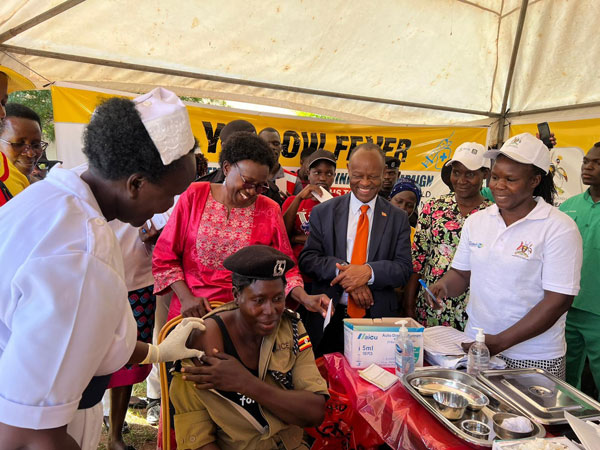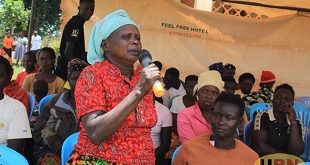
Lira, Uganda | THE INDEPENDENT | A national program to vaccinate the population against yellow fever has been launched in Lira. The campaign will ensure that most Ugandans are protected against this high-threat disease.
The first phase of the campaign under the theme: “One Injection, Life Long Protection, Eliminate Yellow Fever by 2026” is targeting Ugandans aged between nine months to 60 years.
Yellow fever infections can cause serious illness and, in up to 30–60 per cent of severe cases lead to death. There are no specific therapeutics to treat the disease, but early supportive care increases survival rates.
Speaking at the launch, Health Minister, Dr. Jane Ruth Aceng said demands for the yellow fever vaccination have been on since she assumed office.
Dr. Aceng also the Lira City Woman MP Lira City said the launch is an important milestone for the country but more especially for the 51 districts that are more prone to the disease.
Under the Uganda National Expanded Program on Immunization (UNEPI), the ministry will conduct the campaign in three phases to administer 13.4m doses of vaccines. The first phase will run from 9th to 13th June 2023 in 51 districts in the regions of Lango, Acholi, West Nile, Rwenzori, Bunyoro, Kigezi, and Ankole.
The second phase will be conducted in October 2023, while the third phase will be conducted in October next year. Aceng further explained that the country does not have enough doses of vaccines for mass vaccination, the reason why they opted for a phased manner.
Dr. Diana Atwine, the Permanent Secretary said this will be a voluntary exercise for those wishing to be vaccinated. She encouraged those that were already vaccinated not to turn up for the vaccines.
Atwine said pregnant mothers and other special categories of people are exempted from receiving the vaccines.
Dr. Nomathandazo Lukhele from the World Health Organization urged those who have not been vaccinated to take advantage. She said the vaccines are safe.
A safe and effective yellow fever vaccine has been available for more than 80 years. A single dose provides lifelong protection for most people.
Dr. Rita Atungonza, the Deputy Program Manager UNEPI said Uganda still has low population immunity, a reason why below 9 months are already getting the vaccines as part of their routine vaccination exercise.
The vaccine is recommended for people aged 9 months or older and who are traveling to or living in areas at risk for yellow fever virus in Africa.
Robert Ajal, the Prime Minister Lango Cultural Foundation rallied his subjects to embrace the vaccination exercise saying the cultural institution will use their cultural structures to ensure that every eligible person receives the vaccine.
Nelson Muge, the first person to be vaccinated at the launch said he was excited that he has finally received the vaccine.
Yellow fever is a vector-borne hemorrhagic fever caused by a Flavia virus and has a high case fatality rate. The disease is endemic in Uganda with evidence of vectors, yellow fever virus circulation, and frequent outbreak.
The first outbreak recorded occurred in Western Uganda in 1942 and subsequent outbreaks in the following years including 2019 when the country registered other outbreaks in Kaabong and Masaka.
In 2020 there were cases in Moyo, Obongi, Maracha and Buliisa and this year, there were outbreaks in the districts of Buikwe and Buvuma, meaning that most of our districts are not immune to Yellow fever and hence the need to rapidly roll out the vaccine.
According to WHO, Uganda is one of 14 countries in Africa reporting confirmed cases of yellow fever in 2022. Uganda was identified as a high-risk country for yellow fever transmission due to less than 10 per cent of the population being immunized against it, with sporadic outbreaks occurring every 3 to 5 years.
The recent confirmed cases have been reported from near urban areas, such as Kampala. Around 24 per cent of Ugandans (approximately 44 million in total), live in urban areas with roughly half of those living in slums.
Urban outbreaks of yellow fever in densely populated areas with low population immunity and often with poor sanitation, can have catastrophic consequences. With the support of the Eliminate Yellow Fever Epidemics (EYE) Strategy and its key partners, including the World Health Organization, a multi-country outbreak response was organized in neighboring countries that faced more serious yellow fever transmission.
****
URN
 The Independent Uganda: You get the Truth we Pay the Price
The Independent Uganda: You get the Truth we Pay the Price



